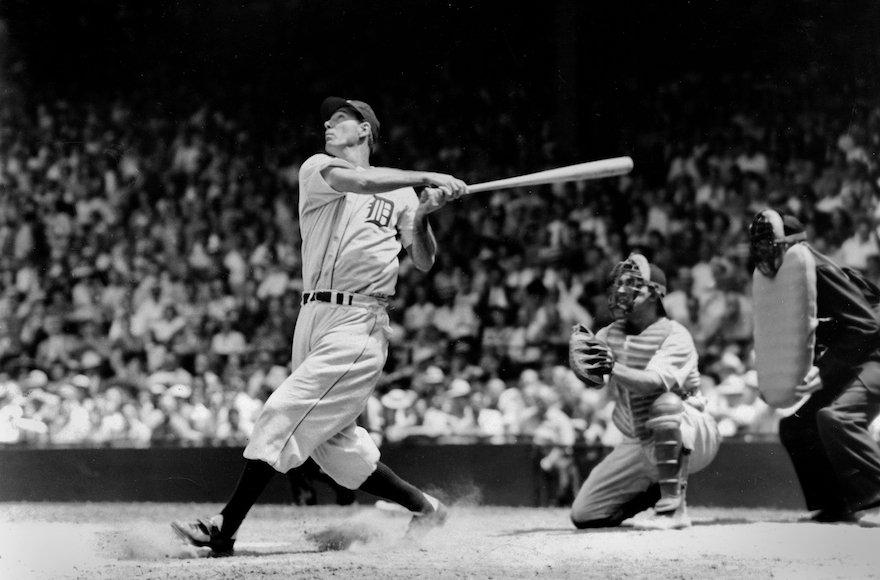Hank Greenberg
Hank Greenberg was one of the best power hitters of all time, but his career was cut severely short by injury and military service, keeping his from reaching the levels his performance promised.
Greenberg first played in the Majors in 1930, getting one at-bat with the Detroit Tigers at age 19 before being sent down to the minors for 3 years. When he returned in 1933, he was ready, and he never had a poor complete season as a full-time player.
He led the league in 1934 with 63 doubles, the 4th-most that have ever been hit in a season, and led the Tigers to their first World Series in 25 years, which they lost to the Cardinals in 7 games despite Greenberg batting .321 with 7 RBI.
The following season he led the league in both home runs and RBI's for the first of many times in his career, was awarded the AL MVP, and earned the Tigers a return trip to the World Series, which they won in 6 games over the Cubs even though Greenberg sprained his wrist in Game 2 and missed the final 4 games.
Early in the 1936 season, he reinjured the same wrist after 12 games and ended up missing the rest of the season while it healed. When he came back in 1937, he had a monster season, with 40 home runs, 200 hits, and 184 RBI's, which is the 3rd-highest total in history, and has not been matched since.
In 1938, he very nearly beat Babe Ruth's home run record, finishing the season with 58. He had one home run that didn't count because of game that was called because of rain, and he was walked more in the final month of that season than in any other in his career, and ended up leading the league with 119.
He had a bit of a down season in 1939, which prompted his manager to move him to the outfield to create room at first base for Rudy York, and Greenberg responded with his second MVP season, in which he led the league in doubles, homers, and RBI's, and had 195 hits as he became the first player ever to win MVP awards at 2 different positions.
In May 1941, Greenberg was drafted into the military, where he served for 7 months, which cost him most of that season. He was released 2 days before Pearl Harbor, after which he immediately reenlisted, serving clear until June 1945, and he holds the league record for most time lost to military service.
When he returned in the middle on 1945, he picked up right where he left off, leading Detroit back to the World Series. He clinched the pennant on the final at-bat of the season in Saint Louis. The story goes that the ump wanted to call the game due to darkness, since the field had no lights, but Greenberg said he could see fine and hit the next ball out of the park for a grand slam to prevent a tie for the title. In the World Series, he hit .304 with 7 RBI's in another 7-game win over the Cubs, and he also hit two of the 3 home runs hit in the entire series.
In 1946, he played his first full season since 1940, and again led the league in home runs and RBI's, the 4th time leading in each category, but he retired after the season due to a salary dispute. The Pittsburgh Pirates convinced him to come out of retirement for one more season at a record salary of $80,000, and he had 25 home runs, making him the first player to hit 25 home runs in a season in each league.
He retired for good after that, ending his career with just 9 full seasons under his belt, having lost one to a wrist injury and nearly 4 to military service. Without the break for World War II, he most likely would have reached 500 home runs in his career. He was definitely one of the best power hitters of all time, and was great in his final World Series, and cannot possibly be left off a list of the best baseball players of all time.

No comments:
Post a Comment